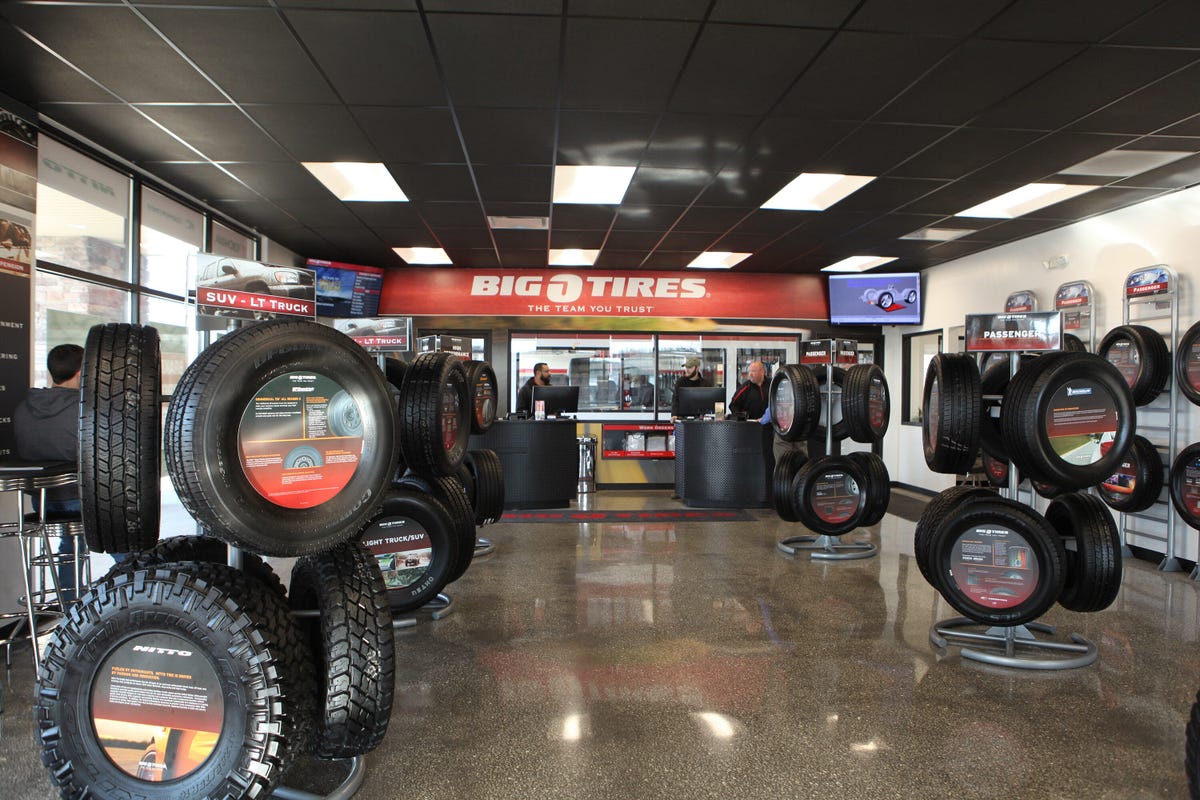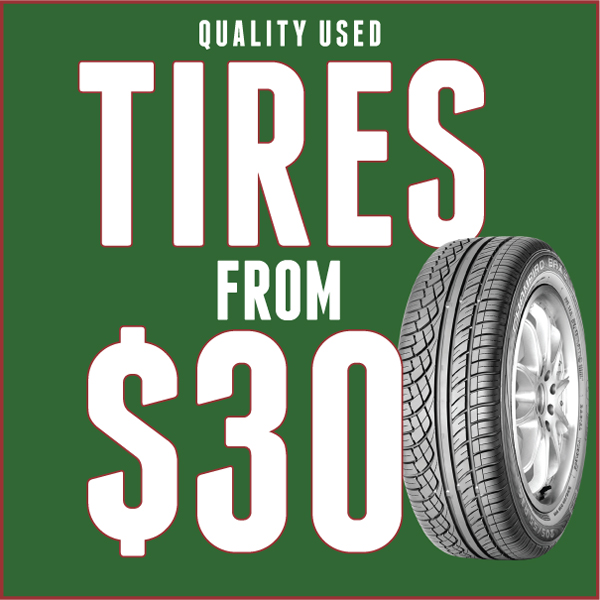The Science Behind Tire Repair Service and Security
When it concerns the elaborate world of tire maintenance and security, there exists a realm of scientific research that often continues to be unseen by the ordinary driver - discount tires morris il. The materials that make up a tire, the influence of tire stress on overall safety and security, the implications of tread wear, the elaborate dynamics of tire grip, and the often-overlooked relevance of appropriate wheel alignment all play essential functions in guaranteeing a lorry operates safely and efficiently. As we navigate with the complexities of tire repair and security, it comes to be noticeable that a deeper understanding of these scientific principles is not only helpful but important for each chauffeur when driving
Tire Composition and Performance
What products make up the structure of tires, and exactly how do these components contribute to their capability on the road? Steel cords are incorporated to boost the tire's stamina and help it preserve its form under various road conditions.
The structure of tires plays a crucial duty in their functionality on the roadway - tire tracks morris il. The rubber substances provide grasp and grip, allowing the tire to adhere to the road surface and supply stability throughout acceleration, braking, and cornering. The textile and steel layers contribute to the tire's ability to hold up against pressure, keep its shape, and sustain the lorry's weight. On the whole, the mindful choice and mix of these products guarantee that tires can execute properly and securely on various road surface areas and problems.
Effect of Tire Pressure on Safety And Security
Keeping proper tire pressure is important for making sure optimal safety and performance while driving. The effect of tire pressure on safety can not be overemphasized. Underinflated tires are vulnerable to getting too hot, which can result in tire blowouts, specifically at high speeds. Additionally, low tire pressure impacts the handling and responsiveness of the car, enhancing the risk of crashes, specifically throughout emergency situation maneuvers. On the other hand, overinflated tires have less contact with the road surface area, reducing grip and triggering unequal wear on the tire footsteps. This endangers the lorry's stability and stopping performance, presenting a significant safety and security hazard. Appropriately filled with air tires likewise play a vital function in fuel efficiency, as underinflated tires can boost moving resistance, resulting in lowered gas mileage. Frequently examining and maintaining the proper tire pressure not just guarantees safety however also extends the lifespan of the tires, conserving on substitute costs over time.
Footstep Wear and Its Implications
Proper surveillance of tire walk wear is essential for ensuring ideal performance and safety on the roadway. As tires wear down, the depth of the step reduces, decreasing the tire's capacity to preserve grip, especially in damp or unsafe problems. The walk pattern and depth play an important duty in carrying water far from the tire to stop hydroplaning and preserving grip when driving surface.
Indications of excessive tread wear consist of bald places, uneven wear, and the look of wear indications. Hairless areas show localized wear, which can cause instability and enhanced threat of blowouts. Unequal wear may suggest issues with tire positioning, you could check here inflation, or suspension elements. Wear indicators are developed into the tire step and become visible when the walk deepness reaches a certain reduced point, suggesting the requirement for instant substitute.

Recognizing Tire Grip Dynamics
Keeping track of tire step wear not only guarantees optimal efficiency and safety yet additionally straight affects the grip dynamics of the tires on various road surface areas. Tire traction is a critical aspect of lorry handling and security, as it establishes the grip in between the tires and the roadway. Grip characteristics differ relying on road conditions such as dry pavement, damp roadways, snow, or ice.

Recognizing tire traction characteristics is crucial for drivers to adjust their driving actions according to the road conditions. morris tire service. Regularly examining tire walk depth and problem can considerably enhance grip efficiency, guaranteeing safer driving experiences throughout different surfaces
Value of Correct Wheel Positioning
Making certain right wheel alignment plays a critical duty in optimizing lorry efficiency and extending tire long life. Proper wheel placement includes changing the angles of the wheels to maker requirements, guaranteeing that they are vertical to the ground and alongside each other. When positioning is off, it can bring about irregular tire wear, decreased gas performance, and compromised handling.
Among the vital benefits of keeping correct wheel positioning is enhanced taking care of and stability. Misaligned wheels can cause the automobile to draw her response to one side, influencing guiding control and general driving experience. In addition, appropriate placement advertises even tire wear, preventing premature tire replacement and saving money on upkeep costs in the future.

Verdict
To conclude, the science behind tire repair work and safety is crucial for keeping vehicle efficiency and ensuring motorist safety and security. By comprehending tire structure, stress, walk wear, traction dynamics, and wheel placement, vehicle drivers can stop mishaps and lengthen the lifespan of their tires. Proper maintenance and regular inspections are important for ideal tire efficiency and general automobile safety. By complying with these standards, vehicle drivers can drive confidently understanding that their tires remain in excellent condition.
The materials that make up a tire, the impact of tire pressure on total safety and security, the ramifications of walk wear, the intricate characteristics of tire traction, and the often-overlooked relevance of appropriate wheel placement all play crucial duties in guaranteeing a vehicle runs securely and effectively. On the various other hand, overinflated tires have much less call with the roadway surface area, lowering grip and creating irregular wear on the tire footsteps. Consistently inspecting and maintaining the proper tire stress not only guarantees safety yet also expands the life-span of the tires, conserving on substitute prices in the long run.
Checking tire tread wear not just makes sure optimum performance and security yet likewise directly affects the traction dynamics of the tires on different roadway surface areas. Tire grip is an important aspect of vehicle handling and safety and security, as it figures out the grasp between the tires and the road.